Don't wanna be here? Send us removal request.
Text
Reimagining Your Digital Presence: The Art of Masterful Website Redesign with Pepper Square
In today's digital age, your website acts as the virtual doorstep to your brand. It's the first encounter many customers have with your business, making it imperative to leave a lasting, positive impression. However, the digital landscape is in constant flux, with evolving design trends, user expectations, and technological advancements. This ever-changing environment necessitates regular website evaluations and when needed, a comprehensive redesign to ensure your online presence remains effective, engaging, and reflective of your brand's current state and future aspirations.
Key Drivers for a Website Redesign
Adapting to Trends: Design trends are in perpetual motion, and staying relevant is crucial for maintaining a modern, professional online presence.
User Experience (UX) Optimization: A website that offers a seamless, intuitive user experience is more likely to convert visitors into customers.
Brand Evolution: As your business grows, your website should accurately reflect its evolving brand identity, values, and offerings.
Enhanced Performance: A redesign can address issues like slow load times, poor SEO, and inadequate mobile responsiveness, which are critical for visibility and user engagement.
Security Enhancements: Protecting your website and users' data against emerging threats is crucial for trust and compliance.
The Transformation Journey
Audit and Analysis: A thorough review of your site identifies what works, what doesn't, and what's missing.
Strategic Redesign Planning: Goals are set based on the audit, focusing on improving UX, brand alignment, and performance.
Design and Development: This phase marries aesthetics with functionality, ensuring your site is visually appealing but also robust and user-friendly.
Testing and Launch: Comprehensive testing across devices and browsers precedes a strategic launch, ensuring a smooth transition for users.
Continuous Improvement: Post-launch, the focus shifts to ongoing optimization, ensuring the site remains relevant and performs at peak levels.
Why Pepper Square?
Choosing the right partner for your website redesign is critical. For those looking for expertise in Bangalore, India, or the USA, Pepper Square stands out for several reasons:
Global Insight with Local Expertise: Our unique perspective combines global design and tech trends with local market insights, ensuring your website resonates with your target audience, regardless of their location.
A Holistic Approach: We look beyond aesthetics, diving deep into your business objectives, user behavior, and market trends to ensure the redesign fully supports your strategic goals.
Technology Leadership: Leveraging the latest web technologies, we ensure your site is fast, secure, and scalable, prepared to adapt to future digital trends.
Collaborative Redesign Process: Our method involves close collaboration with your team, integrating your vision and feedback to ensure the final product embodies your brand.
Comprehensive Services: From initial concept to launch and beyond, we provide ongoing support to ensure your website evolves in alignment with your business.
Choosing Pepper Square as your redesign partner means more than just getting a new website. It means embarking on a strategic partnership to transform your digital presence to captivate, engage, and drive success. Our commitment to excellence, combined with our holistic approach, makes us the ideal choice for businesses in Bangalore, India, and the USA that are ready to take their online presence to the next level.
Let's join forces to create a website that stands out and stands for something more in the eyes of your customers.
0 notes
Text
Embracing Green Innovation: How Sustainable Design is Transforming Website Development
Sustainable design in the context of website development represents a holistic approach to creating digital solutions that are efficient, user-friendly, and environmentally conscious. This shift towards eco-friendly practices in web development is crucial in the digital era, where the internet's carbon footprint is growing at an unprecedented rate. In this blog, we will delve into the significance of sustainable design, its principles, strategies for implementation, and the benefits it brings to the planet and businesses.
Understanding Sustainable Design in Web Development
Sustainable design, often called green or eco-design, aims to minimize the environmental impact of digital products and services. In website development, this involves creating sites that are energy-efficient, easily accessible, and designed to reduce their carbon footprint over time. The internet consumes significant electricity, powering data centers, networks, and the devices we use to access digital content. As such, web developers are pivotal in implementing eco-friendly practices that contribute to sustainability.
The Importance of Sustainable Web Design
Given its intangible nature, the digital realm's environmental impact is often overlooked. However, the carbon emissions associated with website operation are substantial. Data centers hosting the world's websites and online services are estimated to account for about 1% of global electricity use. While this figure might seem small, the growing demand for online services suggests that the internet's energy consumption will continue to rise, highlighting the need for sustainable web design practices.
Principles of Sustainable Web Design
To achieve sustainability in web development, several fundamental principles must be considered:
Efficiency: Designing websites that load quickly and efficiently, reducing the amount of data transferred and processed.
Accessibility: Ensuring sites are accessible to all users, including those with disabilities, promotes inclusivity and reduces the need for alternative, potentially less efficient, digital solutions.
Minimalism: Adopting a minimalist design improves user experience and reduces the website's energy consumption by simplifying the amount of content to be loaded and displayed.
Green Hosting: Opting for web hosting services that use renewable energy sources or are committed to carbon neutrality can significantly reduce a website's environmental impact.
Lifecycle Thinking: Considering the entire lifecycle of a website, from development and maintenance to decommissioning, ensures that sustainability is integrated into every stage of the process.
Implementing Sustainable Web Design Practices
Implementing sustainable practices in web development involves a multi-faceted approach:
Optimize Performance: Use tools like Google's PageSpeed Insights to identify areas for improvement in loading times and efficiency. Techniques such as image optimization, reducing HTTP requests, and utilizing efficient coding practices can significantly reduce a website's energy consumption.
Responsive Design: Ensure that websites are designed to work efficiently across all devices, reducing redundant data transfers and optimizing for mobile use, where energy consumption can be minimized.
Sustainable Coding Practices: Write clean, efficient code that eliminates unnecessary characters and redundancy. This not only makes the website faster but also more sustainable.
Eco-friendly Web Hosting: Choose a web hosting provider that is committed to sustainability, whether through using renewable energy sources, participating in carbon offsetting programs, or using energy-efficient servers.
Content Strategy for Sustainability: Develop a content strategy that prioritizes sustainability, including using eco-friendly images and videos, and minimizes the environmental impact of digital content consumption.
Benefits of Sustainable Web Design
Adopting sustainable web design practices offers numerous benefits:
Reduced Environmental Impact: The most direct benefit is the reduction of the website's carbon footprint, contributing to global efforts to combat climate change.
Improved User Experience: Efficient, well-designed websites offer a better user experience, faster loading times, and more straightforward navigation, leading to higher satisfaction and retention rates.
Cost Savings: Efficient use of resources in web development can lead to significant cost savings, particularly regarding reduced server resource needs and lower energy consumption.
Enhanced Brand Image: Businesses prioritizing sustainability in their web design can bolster their brand image, appealing to environmentally conscious consumers and setting themselves apart from competitors.
Sustainable design in website development is not just a trend but a necessary shift towards more responsible and eco-friendly digital practices. By embracing the principles of sustainable web design, developers and businesses can play a crucial role in reducing the internet's environmental impact.
This approach benefits the planet by enhancing user experience, driving cost savings, and improving brand reputation. As digital technologies continue to evolve, integrating sustainability into web development will become increasingly important, paving the way for a greener, more sustainable digital future.
0 notes
Text
Sustainable Design Practices in UI/UX
In the digital age, sustainability has expanded beyond environmental concerns, embracing digital products and services. Sustainable UI/UX design refers to creating efficient, effective, and environmentally and socially responsible products over their entire lifecycle. This blog explores the essence of sustainable design practices in UI/UX, offering insights into how designers can contribute to a more sustainable and ethical digital world.

The Imperative for Sustainability
As the digital landscape continues to grow, so does its environmental footprint. Data centers, web hosting, and the production and disposal of electronic devices contribute significantly to global carbon emissions. Moreover, the digital divide and accessibility issues highlight the social implications of design decisions. Thus, sustainable UI/UX practices become imperative, aiming to minimize environmental impact while enhancing accessibility and inclusivity.
Principles of Sustainable UI/UX Design
Efficiency and Minimalism: At the heart of sustainable design lies the principle of simplicity. A minimalist approach contributes to a cleaner and more intuitive user experience and reduces the resources required for website and app functionality. Efficient coding, optimized images, and streamlined functionalities can significantly lower energy consumption, contributing to a greener digital environment.
Inclusive and Accessible Design: Sustainability encompasses social dimensions, including inclusivity and accessibility. Designing with a focus on wide accessibility ensures that digital products are usable by everyone, including people with disabilities, thereby promoting social sustainability.
Longevity and Flexibility: Sustainable designs are built to last. This involves creating timeless designs and flexible systems that can evolve without frequent overhauls, reducing the need for additional resources.
Ethical Use of Data: Sustainable UI/UX also means ethical data practices, emphasizing transparency, security, and the minimization of data collection to what's genuinely necessary, respecting user privacy, and reducing energy consumption related to data storage and processing.
Implementing Sustainable Practices
Optimized Performance and Green Hosting: Designers can advocate for and implement practices that reduce a website's or application's loading time and energy consumption, such as optimizing images, utilizing efficient coding practices, and selecting green web hosting services that use renewable energy sources.
Dark Mode and Energy Conservation: Implementing dark mode options can reduce energy consumption on devices with OLED or AMOLED screens, contributing to battery conservation and offering an alternative user experience that many find visually appealing.
Recycling Content and Components: Reusing and recycling content and design components saves time and resources and contributes to a consistent user experience across different parts of a digital product.
Eco-Friendly User Behaviors: Encouraging eco-friendly behaviors through design, such as promoting digital rather than physical copies, can significantly impact the environment.
Challenges and Considerations
While the move towards sustainable UI/UX design is promising, it has challenges. These include the need for industry-wide adoption of green practices, balancing aesthetic and functional aspects with sustainability goals, and the ongoing education and awareness required to prioritize sustainability in the design process.
Case Studies
Highlighting successful case studies of sustainable UI/UX design can provide valuable insights and inspiration. Companies like Google and Apple are increasingly incorporating sustainability into their design processes, from using recycled materials in hardware to optimizing software for energy efficiency.
Conclusion
Sustainable design in UI/UX is an evolving practice that requires a shift in how designers and developers approach their work. By adopting sustainable practices, the digital product design industry can significantly address environmental challenges and promote a more inclusive, equitable world.
As designers, we are responsible for considering the broader impact of our work, striving to create digital experiences that are effective, engaging, and sustainable for future generations.
0 notes
Text
Enterprise UX refers to the design of user experiences specifically for applications, systems, and solutions used within large organizations. These platforms are often complex, supporting various functions such as data management, business processes, and collaborative work. The goal of enterprise UX is to create intuitive, efficient, and accessible interfaces that cater to the diverse needs of an organization's employees, thereby enhancing productivity and satisfaction. Unlike consumer UX, which focuses on the broad consumer market, enterprise UX must address the intricate workflows, data security, and scalability requirements of corporate environments. It involves a deep understanding of the users' roles within the organization, the tasks they perform, and the challenges they face, ensuring the design supports their work effectively and seamlessly.
For more insights into best practices for enterprise UX, including strategies to enhance user satisfaction and productivity within complex systems, visit Pepper Square- Enterprise UX agency.
Pepper Square resources provide a comprehensive overview of designing effective user experiences in the enterprise context, offering valuable guidelines and examples to practitioners in the field.
1 note
·
View note
Text
Website Redesign: When and How to Give Your Site a Makeover
In the ever-changing digital landscape, your website is often the first interaction users have with your brand. It's your digital storefront, and its design plays a pivotal role in shaping the user experience. Over time, the need for a website redesign becomes apparent to stay relevant, user-friendly, and aligned with evolving design trends.
In this comprehensive guide, we'll explore website redesign from a design perspective, delving into when to consider a makeover and how to execute it effectively.

The Indicators for a Website Redesign
Outdated Design
A website's visual appeal is a significant factor in attracting and retaining users. An outdated design can create a negative impression and lead to higher bounce rates. Signs of an outdated design include obsolete fonts, color schemes, and UI elements.
2. Poor User Experience
User experience is paramount in web design. If your website is challenging to navigate, slow to load, or lacks mobile responsiveness, it's time for a redesign. User feedback, analytics data, and usability testing can reveal UX issues.
3. Decline in Performance Metrics
A decline in key performance metrics like conversion rates, click-through rates, and time spent on the site may indicate that your current design isn't effectively engaging users. Redesigning with a focus on user journey can boost these metrics.
4. Rebranding or Repositioning
When your brand undergoes changes, such as a new logo, mission statement, or target audience, your website should reflect these alterations. Consistency in branding is crucial for user trust and recognition.
5. Competitor Advancements
Monitoring your competitors' websites can reveal design trends and innovations you might miss out on. A redesign can help you stay competitive and even leap ahead in terms of design and functionality.

Planning Your Website Redesign
Define Clear Objectives
Start by setting clear objectives for your redesign. Are you aiming to improve user engagement, increase conversions, or enhance brand perception? Knowing your goals will guide the entire process.
2. User Research
Understand your target audience's needs, preferences, and pain points. Conduct surveys, interviews, and usability tests to gain valuable insights. User personas can help you design with specific user profiles in mind.
3. Content Audit
Review and update your content. Remove outdated information, create fresh and relevant content, and ensure it aligns with your new design. Well-organized content improves user navigation.
4. Information Architecture
Plan the website's structure and navigation. Use wireframes or sitemaps to visualize the layout and user flow. Ensure that the hierarchy of information is clear and logical.
5. Design Principles
Apply design principles such as balance, contrast, unity, and emphasis to create an aesthetically pleasing and functional design. Consider typography, color schemes, and visual elements that align with your brand and audience.

The Redesign Process
Responsive Design
In today's mobile-centric world, responsive design is non-negotiable. Ensure your website adapts seamlessly to various screen sizes and devices, providing a consistent user experience.
2. Visual Design
Redesign your website's visual elements, including layout, color scheme, typography, and imagery. Incorporate modern design trends while maintaining brand identity.
3. Accessibility
Prioritize accessibility in your redesign. Ensure that your site is usable by individuals with disabilities, including those who use screen readers or require keyboard navigation.
4. Speed and Performance
Optimize page load times by compressing images, reducing server requests, and using content delivery networks (CDNs). Faster loading improves user satisfaction and SEO rankings.
5. User-Centric Navigation
Implement user-centric navigation menus and structures. Aim for a three-click rule, where users can find information within three clicks or less.
6. Testing
Before launching your redesigned website, conduct extensive testing. Check for usability issues, broken links, and cross-browser compatibility. User testing with real users can uncover valuable insights.
Post-Redesign Evaluation
Analytics Tracking
Monitor your website's performance post-redesign using analytics tools. Track key metrics, such as traffic, bounce rate, conversion rates, and user engagement. Analyze the data to gauge the success of your redesign.
2. Feedback and Iteration
Collect user feedback through surveys or feedback forms. Use this input to make iterative improvements to your design. Continuous optimization is key to keeping your website fresh and user-friendly.
3. SEO Considerations
Ensure that your SEO rankings are maintained or improved after the redesign. Redirect old URLs to new ones, update meta tags, and maintain a clean site structure.
4. Regular Maintenance
Websites are not static; they require ongoing maintenance. Regularly update content, plugins, and security measures to keep your website secure and up-to-date.
A website redesign is not just about a fresh coat of paint; it's about improving user experience, staying competitive, and aligning with your brand's evolution.
By recognizing the signs indicating a need for change and following a thoughtful redesign process, you can create a website that looks great and performs exceptionally well, delighting your audience and business.
Remember, in the fast-paced world of the internet, your website is a living entity that should continually evolve to meet the ever-changing needs of your users.
0 notes
Text
The Full Guide to UI Design: A Designer's Perspective
User Interface (UI) design is much more than just creating good-looking screens. It's about understanding users, and their needs, and crafting experiences that are not only visually appealing but also intuitive and efficient. As a designer, I've learned that UI design is a delicate balance between art and science.

Deep Dive into UI Design Fundamentals
Understanding UI Design: UI design is about creating interfaces that communicate function and importance effortlessly. It's the visual touchpoint between the user and the digital product.

Core Elements from a Designer's Lens
Layout: It's not just where elements are placed; it's about guiding the user's eye and actions intuitively.
Typography: Beyond readability, typography conveys mood and brand personality.
Color Theory: Colors evoke emotions and actions. Understanding color psychology is crucial.
Branding: It's about creating a visual language that speaks the brand's story.
Interactivity: Thoughtful interactive design can elevate the user experience from functional to delightful.
Principles of Effective UI Design
Clarity Over Creativity: Every design element must serve a purpose.
Consistency is Key: It breeds familiarity and ease of use.
Feedback: It's not just about informing users but also engaging them.
Aesthetics and Usability: Striking the right balance is an art in itself.

The UI Design Journey
Research: Empathy is our greatest tool. Understanding our users' worldviews enables informed design decisions.
Wireframing: This is where we sketch our ideas, experimenting with the flow and layout.
Prototyping: Prototypes bring us closer to the final product, allowing us to iterate rapidly.
Testing: User testing is where our assumptions meet reality.
Implementation: Collaboration with developers is critical in this phase to ensure design integrity.

Essential Tools from My Experience
Sketch: For its simplicity and powerful vector tools.
Adobe XD: Its versatility in prototyping and integration with Adobe Suite is invaluable.
Figma: The collaboration features here are a game-changer for team projects.
Best Practices I Swear By
Simplicity is Sophistication: A minimalistic approach often yields the most user-friendly designs.
Think Mobile-First: In a mobile-dominated world, designing for smaller screens first ensures broader accessibility.
Inclusive Design: Accessibility isn't a 'nice-to-have.' It's essential.
Design Thinking: Always start with understanding user needs and work backward.
Current Trends Through a Designer's Eye
Minimalism: It's about maximizing simplicity and focus.
Dark Mode: A trend driven by user comfort and modern aesthetics.
Voice UI: As a designer, adapting visual design to complement voice interactions is a new challenge.
Micro-interactions: Small animations that delight and inform users.
Neumorphism: A trend that's redefining depth and realism in UI.

Navigating Design Challenges
Aesthetics vs Functionality: The key is to find designs that speak both.
Emerging Technologies: Staying curious and continuously learning is vital.
Consistency Across Platforms: A unified design language is crucial for brand identity.
In the realm of UI design, the learning never stops. Each project is an opportunity to explore new ideas, solve new problems, and create something truly unique and user-centric. The key is to remain adaptable, empathetic, and always willing to learn from each experience.
Remember, great UI design isn't just about how a product looks; it's about how it feels and works. As designers, we have the power to create experiences that can make people's lives easier and more enjoyable. Let's use that power wisely.
0 notes
Text
Beyond Aesthetics: UI/UX as a Strategic Business Tool from a Designer's Lens

In the vibrant and ever-evolving world of digital design, the role of UI/UX transcends mere visual appeal. As a designer, I see it as a fundamental strategic asset vital for business growth, user engagement, and market success. This blog delves deep into how UI/UX, from a designer's perspective, is not just about creating visually appealing interfaces but crafting experiences that drive strategic business outcomes.
Strategic UI/UX: More Than Meets the Eye
From a design standpoint, UI/UX is a symphony of psychology, aesthetics, and technology. It's about understanding user behaviors, anticipating their needs, and creating interfaces that are not just functional but emotionally resonant. As designers, we see UI/UX as a journey where every touchpoint is an opportunity to connect with the user and reinforce the brand narrative.
Crafting Engaging User Experiences
Engagement is the currency of the digital world. A well-designed UI/UX directly influences how users interact with a product. As designers, we focus on crafting experiences that are intuitive and delightful, making sure that each interaction feels natural and effortless. This approach not only retains users but also turns them into advocates for the brand.
Converting Designs into Business Success
A strong experience design is a powerful conversion tool. It's about more than just leading users to a 'Buy' button; it's about creating a seamless journey from discovery to action. As designers, we employ user journey mapping and A/B testing to refine these paths, ensuring that every design element strategically guides users toward conversion.
Shaping Brand Identity Through Design
In the design world, UI/UX is a key player in brand storytelling. Consistency in design elements like color, typography, and imagery creates a visual language that users associate with the brand. This consistency extends beyond the screen, influencing how users perceive and engage with the brand in the real world.
Data-Driven Design: A Designer's Best Friend
In the realm of design, decisions are increasingly driven by data. User analytics offer invaluable insights into how users interact with a design, which elements attract attention, and where improvements are needed. This data-centric approach enables us to craft designs that are not just artistically sound but also aligned with user needs and business goals.
Innovation through Design
As designers, we view UI/UX as a playground for innovation. By constantly experimenting with new layouts, interaction models, and technologies, we push the boundaries of what's possible, delivering fresh and exciting experiences to users. This constant innovation enhances the user experience and keeps businesses ahead in the competitive digital landscape.
From a designer's perspective, UI/UX is a multifaceted tool that goes far beyond aesthetics. It is about creating meaningful interactions, driving business goals, and telling a brand's story in a compelling way. It blends art, science, and technology to craft experiences that are not just visually stunning but strategically effective. As the digital landscape continues to evolve, the role of UI/UX as a strategic business tool becomes increasingly vital, demanding a blend of creativity, empathy, and innovation from designers.
The message is clear: In the hands of a skilled designer, UI/UX is a powerful instrument that shapes not just how a product looks but how it performs in the market, resonates with users, and achieves business objectives.

0 notes
Text
The Art and Science of Color Psychology in UI/UX Design
In the intricate realm of UI/UX design, color emerges as a powerful tool that transcends mere aesthetics. It's a medium through which designers can communicate emotions, guide user behavior, and craft memorable digital experiences. In this comprehensive exploration, we'll dissect the psychology of color and how it profoundly influences the design of user interfaces from a designer's perspective.
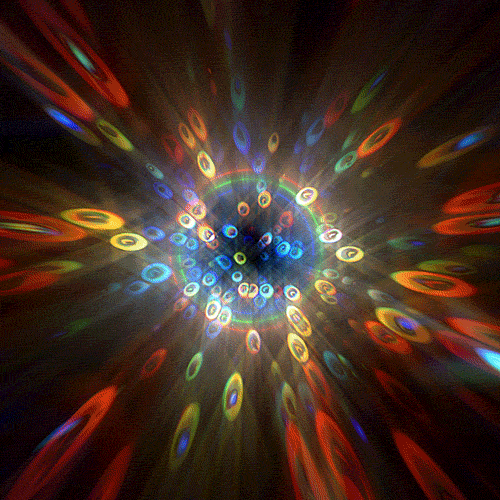
The Elemental Role of Color
Color isn't just a decorative element; it's a fundamental building block of design. Within UI/UX, color serves as a versatile and essential tool with several vital functions:
Visual Hierarchy: Color is a conductor that directs users' attention. It helps establish a visual hierarchy, highlighting crucial elements and guiding users through a design.
Brand Identity: Colors are intimately tied to brand identities. They are a brand's signature, allowing users to instantly recognize and connect with products or services.
Emotional Conveyance: Different colors evoke distinct emotions and set the tone for the user experience. Properly employed, color can create a specific atmosphere and resonate with users on an emotional level.
Usability: The careful selection and application of color enhance readability, accessibility, and overall usability, ensuring that users can interact with a design effectively.
Call-to-Action: Color can make certain elements, such as call-to-action buttons, more noticeable and compelling, encouraging users to take desired actions.
Understanding Color Psychology
Designers must delve into color psychology to wield color effectively in UI/UX design. This field explores the emotional and cognitive effects of colors on human behavior and perception, providing valuable insights into user interaction. Let's explore some key color associations and the emotions they trigger:

Red: Passion and Urgency
Red is a commanding color that grabs attention and evokes strong emotions, including love, passion, and urgency. In UI/UX, red is often used for calls to action and alerts.

Blue: Trust and Tranquility
Blue exudes feelings of trust, reliability, and tranquility. It's a prevalent choice for tech companies and social platforms, fostering a sense of security and calm.

Yellow: Optimism and Positivity
Yellow radiates optimism, happiness, and positivity. It's a vibrant color that can capture attention and create a cheerful ambiance.
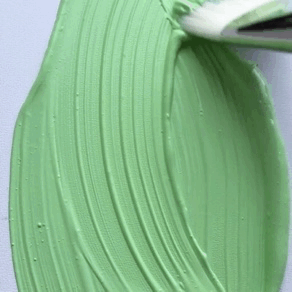
Green: Growth and Balance
Green symbolizes growth, health, and balance. It's frequently used in UI design for eco-friendly products and services, and it's associated with relaxation.

Purple: Creativity and Luxury
Purple is linked to creativity, luxury, and sophistication. Brands seeking to convey elegance or innovation often incorporate purple into their designs.

Orange: Energy and Warmth
Orange is a vibrant color that exudes energy, warmth, and friendliness. It creates a sense of enthusiasm and approachability.

Black and White: Simplicity and Elegance
Black and white are classic colors synonymous with simplicity and elegance. Minimalist designs often employ these colors to convey sophistication and timelessness.
Applying Color Psychology in UI/UX Design
Now that we've explored the emotional and cognitive associations of colors let's delve into how designers can apply color psychology effectively in UI/UX design:
1. Establish Clear Brand Identity:
Use colors consistently to reinforce your brand's identity and messaging. Ensure that your color choices align with your brand's personality and values.
2. Create Visual Hierarchy:
Utilize color to guide users' attention to critical elements. Vibrant colors can make call-to-action buttons stand out, helping users navigate effectively.
3. Consider Cultural Factors:
Be mindful of cultural differences and the varied associations with color. What may convey one emotion in one culture might have a different meaning in another.
4. Accessibility Matters:
Ensure your color choices meet accessibility standards, especially for visually impaired users. Utilize color contrast effectively to enhance readability.
5. Test and Iterate:
Conduct user testing to gauge emotional responses and the usability of your color choices. Iterate based on user feedback to fine-tune your design.
Case Studies in Color Psychology
To illustrate the impact of color in UI/UX design, let's examine a few case studies:

1. Facebook: The Power of Blue
Facebook's iconic blue fosters trust and reliability, aligning seamlessly with its mission of connecting people. It instills a sense of security and calmness, encouraging user engagement without anxiety.

2. Spotify: Energetic Green and Black
Spotify's energetic green and black combination radiates vibrancy and creativity while maintaining a sleek, elegant appearance. This balance encourages users to explore and discover new music with enthusiasm.

3. Airbnb: Red for Urgency
Airbnb strategically uses red for call-to-action buttons when immediate action is required, such as when booking a property. Red imparts a sense of urgency, prompting users to act swiftly.

4. Apple: Clean and Minimalist Black and White
Apple's use of black and white epitomizes simplicity and elegance. This minimalist approach embodies the brand's premium and user-friendly image, creating a timeless and sophisticated user experience.
The psychology of color is a multidimensional tool that designers can leverage to create meaningful, engaging, and effective user interfaces. By comprehending the emotional and cognitive associations of colors, designers can strategically employ color to convey brand identity, establish visual hierarchy, and influence user behavior.
However, it's essential to consider cultural factors, accessibility, and user feedback in the design process. Ultimately, the skillful application of color psychology elevates UI/UX design beyond mere visuals to a profound and impactful experience for users, a testament to the artistry and science of design.
0 notes
Text
Here's my new blog about the importance of placing case studies on agency websites. And for anyone looking for a reference on how to place your case study on a website, here's my favorite website and a bible for any designers looking for sample case studies. Pepper Square- UI/UX Design Case Studies
0 notes
Text
My new blog is about choosing between mobile-first and desktop-first: Determining the optimal UX design strategy.
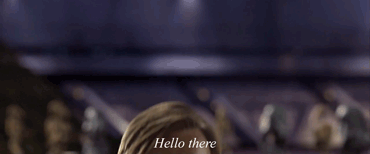
0 notes
Text
My new blog is about selecting the best UI/UX agency. Please share your thoughts in the comment section.
1 note
·
View note
Text
Designing the Future: A Designer’s Insight into the Role of UI Case Studies
As designers, we're not just creating websites but crafting experiences. In this journey, UI case studies aren't just helpful; they're essential. They are our guides, our inspiration, and our lessons learned, helping us bridge the gap between aesthetic appeal and functional brilliance.

The Evolution of Web Design and UI
Remember the days of simplistic, text-only websites? We've come a long way since then. Today, UI isn't just a part of web design; it's the heart of it. It's where art meets user needs, where every pixel can make a difference in the user experience.

Understanding UI Case Studies
For us designers, UI case studies are like stories with a moral. They detail the journey of a UI project, from the first sketch to the final user interaction. These narratives are a goldmine of information, showing us the 'why' behind every design decision.
Why UI Case Studies are Crucial Today
Learning from Successes and Failures: They’re like a seasoned mentor, showing us what works and warning us about what doesn’t.
User-Centric Design: These studies remind us to keep our designs focused on the user, making sure our creations are as intuitive as they are beautiful.
Innovative Solutions: They’re our muse, offering creative solutions to the unique challenges we face in our design endeavors.
Benchmarking and Standards: They help us gauge our work against the best in the industry, pushing us to aim higher.

Impact on Business and Branding
A well-executed UI is a silent ambassador for the brand. It’s more than just a pretty face; it’s a tool that can elevate user engagement and conversion, directly impacting the business’s bottom line.
Integrating UI Case Studies into the Design Process
Incorporating lessons from these case studies is like adding secret ingredients to our design recipe. It involves iterative improvements guided by real-world feedback and data, ensuring our designs are always evolving and improving.
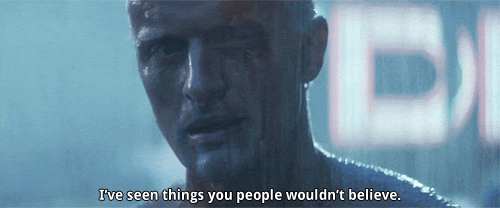
Future of UI Design and Case Studies
Looking ahead, UI design is set to become more personalized and more intuitive. As AI and immersive technologies weave into our design canvas, the role of case studies will also evolve, offering new insights into these uncharted territories.
For us designers, UI case studies are more than just a reference point; they are a source of inspiration and learning. As we navigate the intricacies of crafting digital experiences, these studies provide invaluable insights, helping us create designs that look great and resonate deeply with users.
I explored some of the case study references from one of the leading UI/UX agencies in the USA- Pepper Square, and I've mentioned it above.
Please add more in the comments if you find more.
1 note
·
View note
Text
My New Blog
Here's my new read about Designing Service-Based and E-commerce Websites.
Inspired by the following reads-
Cost of Building an eCommerce Website
UI prototyping in designing.
UX Design Process
Please share your thoughts on the same, and if you like it, do share it with your circle.
Thanks!!
1 note
·
View note
Text
Here is my latest blog on the topic:
The Future of UI/UX Design and Development with AI
Please share your thoughts on the above and keep your support for the future as well. This read was inspired by a read about UI/UX Design Trends from one of the UI/UX agency in the USA- Pepper Square.
Please share your thoughts about my blog.
1 note
·
View note
Text
Guide to Optimizing UI/UX for Remarkable Conversion Rates on Your E-commerce Website
My new read is about tips to optimize the UI/UX for remarkable conversion rates for an e-commerce website.
In case you find this read helpful, here's a read about-
E-Commerce Shopping Cart UI Design Examples
Guide on the Cost of Building an eCommerce Website
Thanks!!
1 note
·
View note
Text
Best ChatGPT Prompts for UI/UX Designers and Developers
Title: Best ChatGPT Prompts for UI/UX Designers and Developers in 2023 and How to Design Websites That Stand Out

In the ever-evolving web design and development world, staying ahead of the curve is essential to creating websites that truly stand out. ChatGPT, powered by OpenAI, has become a valuable tool for UI/UX designers and developers, offering creative prompts and insights to enhance the design process.
This comprehensive blog post will delve deeper into the best ChatGPT prompts for 2023 and explore how to utilize them to design websites that leave a lasting impression.

Exploring ChatGPT for Design Inspiration: ChatGPT can serve as a limitless source of design inspiration. Whether you're working on a new project or revamping an existing website, consider asking ChatGPT questions like:
"What are the latest web design trends in 2023?"
"Give me creative ideas for a minimalist website layout."
"Suggest color schemes for a tech-focused homepage."
These prompts can kickstart your creative process and provide fresh ideas to make your website design unique. ChatGPT's ability to synthesize information from various sources can help you stay on top of the latest design trends and adapt them to your projects.
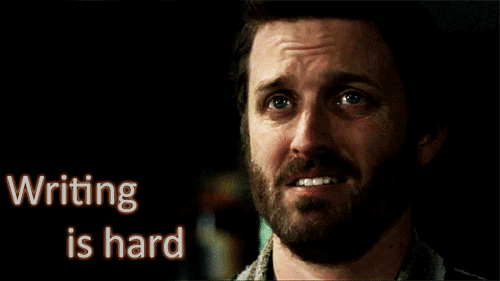
Content generation and optimization: Content is king in the digital realm, and ChatGPT can help you generate and optimize website copy. When creating content, ask ChatGPT for assistance with:
"Write engaging product descriptions for our e-commerce site."
"Generate SEO-friendly meta descriptions for our blog posts."
"Create a compelling 'About Us' page for our company website."
ChatGPT can generate text that is not only well-written but also tailored to your specific audience and brand voice. Using ChatGPT for content generation, you can ensure your website communicates effectively with visitors and search engines.

UX Problem Solving: Enhancing the user experience is paramount in web design. ChatGPT can help you identify and solve UX issues with prompts such as:
"How can I improve the navigation on our website?"
"Suggest ways to reduce bounce rates on our landing page."
"Optimize our checkout process for better conversion rates."
ChatGPT can provide insights and solutions to create a seamless and user-friendly browsing experience. Its ability to analyze user behavior data and best practices can guide you in making data-driven decisions to improve your website's UX.
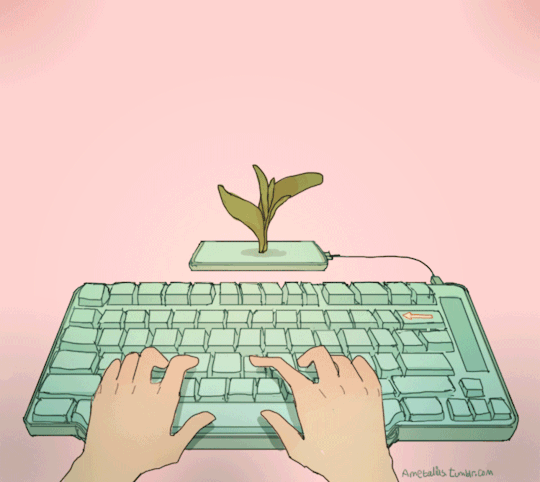
Responsive Design and Compatibility: Responsive design is crucial with the diverse range of devices and browsers available. ChatGPT can assist by answering questions like:
"How can I make our website more mobile-friendly?"
"Ensure our website is compatible with the latest web browsers."
"Optimize images and videos for faster loading times."
These prompts can help you adapt your design for various platforms and ensure a consistent user experience. ChatGPT can recommend responsive design frameworks, techniques, and tools to streamline development.

Staying Updated with Industry Insights: Web design trends evolve rapidly, and staying informed is critical to success. ChatGPT can keep you updated with prompts such as:
"What emerging technologies should I consider for our website in 2023?"
"Provide insights into the importance of accessibility in web design."
"Suggest tools for A/B testing to improve website performance."
You can implement cutting-edge techniques and technologies in your designs by staying updated. ChatGPT's access to a vast database of information ensures that you receive the most relevant and up-to-date information to remain competitive in the industry.
ChatGPT will be a valuable resource for UI/UX designers and developers in 2023, offering creative prompts, content generation, problem-solving, and industry insights. By harnessing the power of ChatGPT, you can design websites that stand out and provide exceptional user experiences.
Stay innovative, adapt to changing trends, and let ChatGPT be your partner in creating web designs that leave a lasting impact in the digital landscape. Embracing ChatGPT as an integral part of your design and development process will help you stay ahead in the ever-evolving world of web technology.

1 note
·
View note
Text
Go ahead and read more about my journey as a UI/UX designer. And how the online readings from UI/UX agencies helped me become a better UI/UX professional.
1 note
·
View note